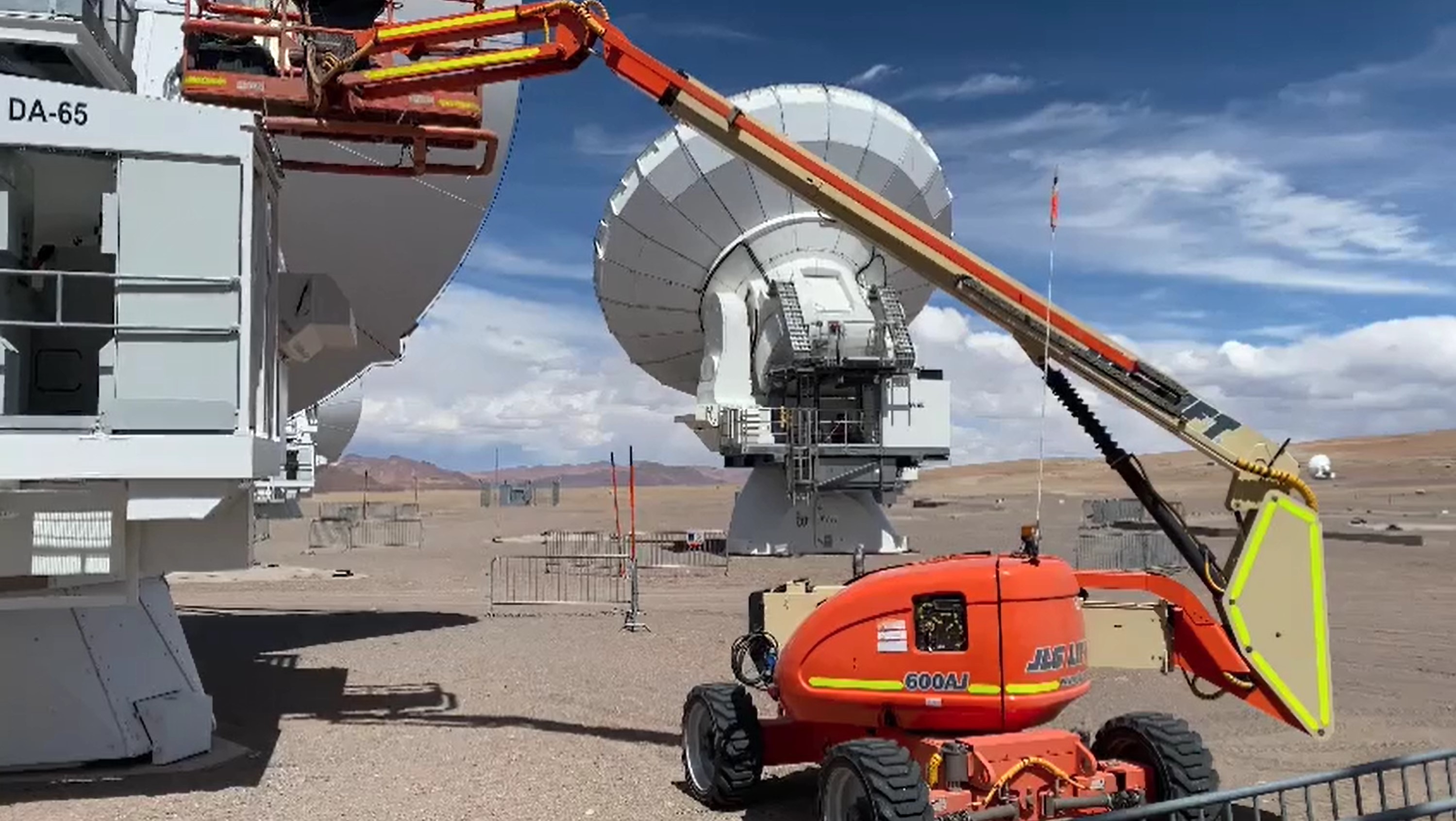Researchers have identified an exceptionally unusual cosmic object known as a Long Period Radio Transient (LPT), named CHIME J1634+44.
Recent News
Astronomers Discover Massive Molecular Cloud Hidden in Milky Way
In a new study published in the Astrophysical Journal, researchers using the U.S. National Science Foundation Green Bank Telescope (NSF GBT) have peered into a molecular cloud known as M4.7-0.8, nicknamed the Midpoint cloud. Their observations have revealed a dynamic region bustling with activity, including potential sites of new star formation.
Galactic Mystery: How “Ice Cubes” Survive in the Milky Way’s Blazing Bubbles
A team of astronomers has made a surprising discovery using the U.S. National Science Foundation Green Bank Telescope (NSF GBT): eleven fast-moving clouds of cold, neutral hydrogen gas—akin to “ice cubes”—surviving deep inside the Fermi Bubbles.
ALMA Takes First Step Toward Return to Service

Personnel at the Atacama Large Millimeter/submillimeter Array (ALMA) in Chile have begun the process of returning the facility to an active observational status, following the shutdown caused by COVID-19 in March of 2020. Single-dish test observations of Mars at Band 3 (84-116 GHz) have been completed with two antennas. The first few ALMA antennas are being brought back online initially by powering up their drive systems.
We are grateful to the dedicated crew that is working to bring ALMA back into operation, and are happy to see this successful first step. Much work remains to be done, but we have begun the journey.
The National Radio Astronomy Observatory is a facility of the National Science Foundation, operated under cooperative agreement by Associated Universities, Inc.
###
The Atacama Large Millimeter/submillimeter Array (ALMA), an international astronomy facility, is a partnership of the European Organisation for Astronomical Research in the Southern Hemisphere (ESO), the U.S. National Science Foundation (NSF) and the National Institutes of Natural Sciences (NINS) of Japan in cooperation with the Republic of Chile. ALMA is funded by ESO on behalf of its Member States, by NSF in cooperation with the National Research Council of Canada (NRC) and the Ministry of Science and Technology (MOST) and by NINS in cooperation with the Academia Sinica (AS) in Taiwan and the Korea Astronomy and Space Science Institute (KASI).
ALMA construction and operations are led by ESO on behalf of its Member States; by the National Radio Astronomy Observatory (NRAO), managed by Associated Universities, Inc. (AUI), on behalf of North America; and by the National Astronomical Observatory of Japan (NAOJ) on behalf of East Asia. The Joint ALMA Observatory (JAO) provides the unified leadership and management of the construction, commissioning and operation of ALMA.
###
This news article was originally published on the NRAO website on January 14, 2021.
Recent News
Space’s Spinning Enigma: A ‘Unicorn’ Object Defies Astrophysics
Researchers have identified an exceptionally unusual cosmic object known as a Long Period Radio Transient (LPT), named CHIME J1634+44.
Astronomers Discover Massive Molecular Cloud Hidden in Milky Way
In a new study published in the Astrophysical Journal, researchers using the U.S. National Science Foundation Green Bank Telescope (NSF GBT) have peered into a molecular cloud known as M4.7-0.8, nicknamed the Midpoint cloud. Their observations have revealed a dynamic region bustling with activity, including potential sites of new star formation.
Galactic Mystery: How “Ice Cubes” Survive in the Milky Way’s Blazing Bubbles
A team of astronomers has made a surprising discovery using the U.S. National Science Foundation Green Bank Telescope (NSF GBT): eleven fast-moving clouds of cold, neutral hydrogen gas—akin to “ice cubes”—surviving deep inside the Fermi Bubbles.
